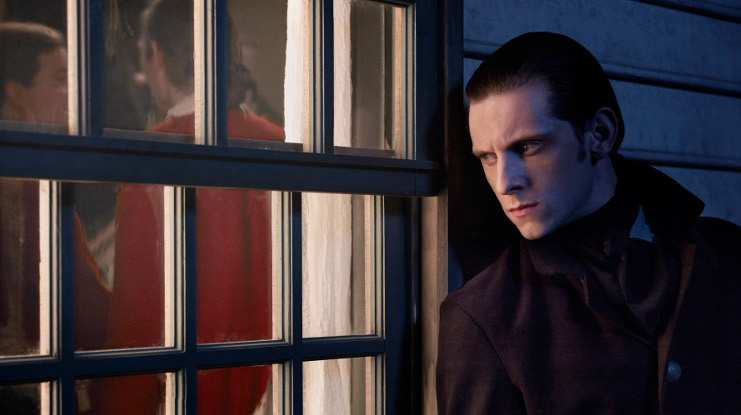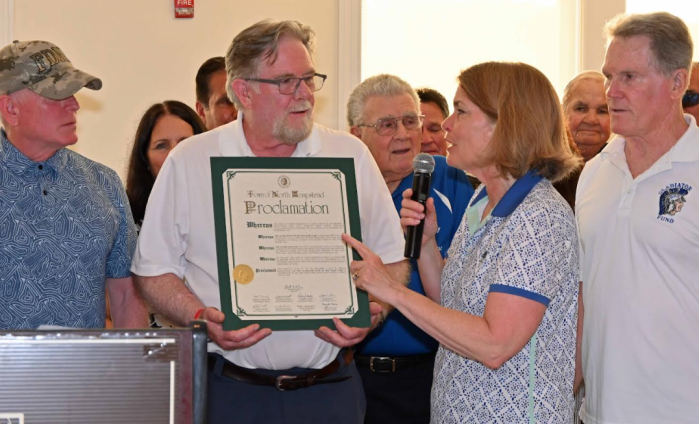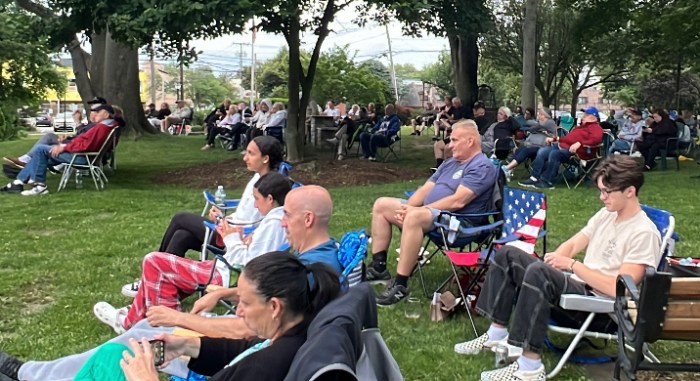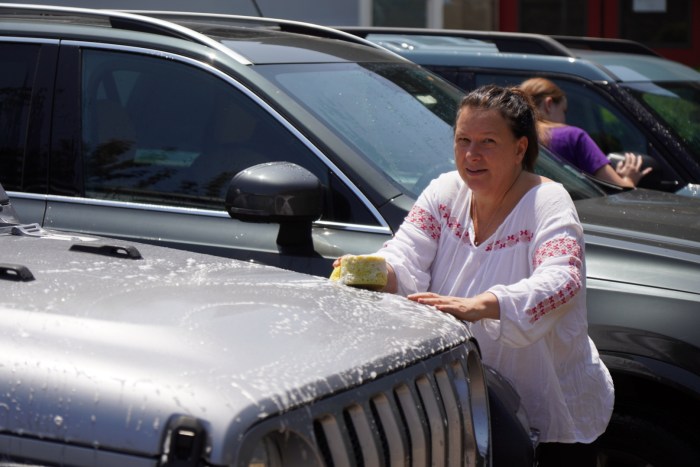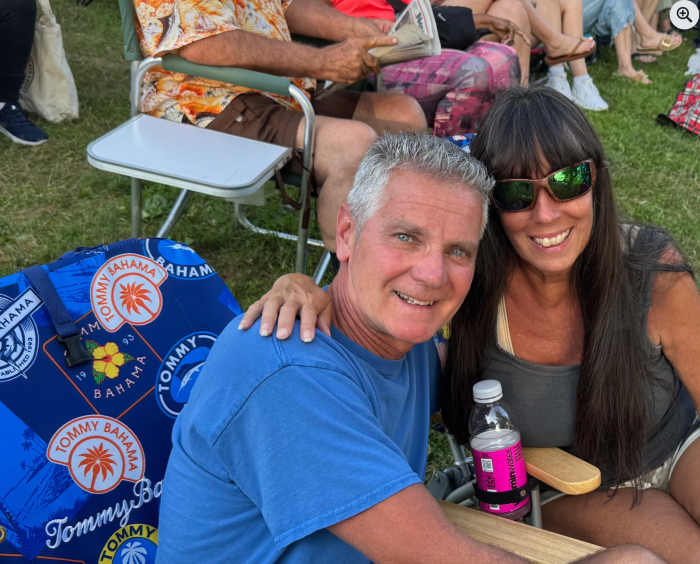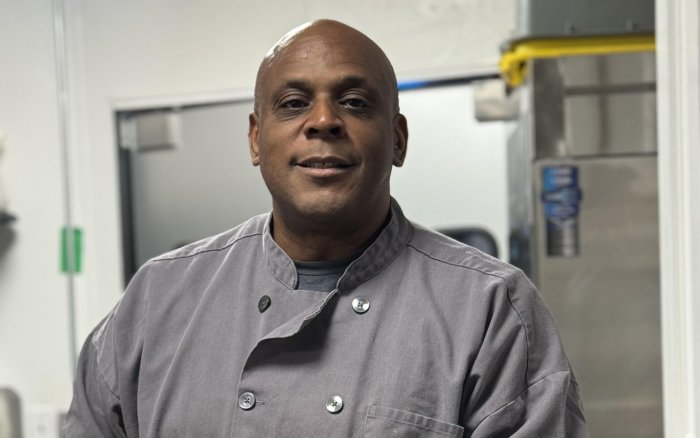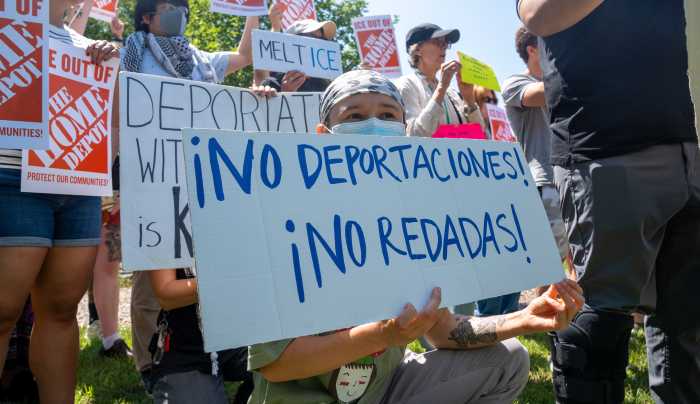What do black petticoats, white handkerchiefs and invisible ink have in common? Back in the Revolutionary War, they enabled the Culper Ring of Long Island spies to convey crucial information about the British to Gen. George Washington when he was desperate to turn the tide against the mightiest empire the world had ever seen.
It’s a fascinating, not widely known chapter of our country’s 18th century history, linking a courageous farmer in Setauket to a wealthy merchant from Oyster Bay and the raffish owner of a coffeehouse in Manhattan who happened to publish a pro-Tory rag—while collecting intelligence about British intentions and covertly passing it along. The other members of the ring included a foolhardy whaleboat operator-turned-courier plowing the Sound to Connecticut, a courageous married woman who used her clothesline as a way to signal him where he could safely meet his handler, and a tavern owner whom later historians dubbed the “Paul Revere of Long Island” because he rode like the wind between Manhattan and Setauket through decidedly unfriendly territory.
After all, once Washington’s Continental Army had evacuated the city after their defeat at the Battle of Brooklyn in August 1776, the British began turning Long Island essentially into a war camp, which suited the Tory loyalists well—until even they chafed under the Redcoats’ royal boot heels.
The valiant exploits of the Culper Ring are the subject of an intriguing new series on AMC, called TURN, whose 90-minute premiere airs Sunday, April 6, at 9 p.m. Entertainment Weekly has called the show “a risky period piece…poised to be the network’s newest prestige drama—intense, gritty, and packed with all-American adventure.” As the trailer says, “They turned against their neighbors. They turned against their king.” The series is based on Washington’s Spies: The Story of America’s First Spy Ring, a book by the prizewinning historian, Alexander Rose.
“Before 1778, when the Culper Ring was formed, Washington lacked ears and eyes on Long Island,” Rose tells the Press. “He was terribly hampered in his own planning by ignorance of British movements, designs, and strength. Long Island and New York were the linchpins of his strategy, in other words, and possessing the inestimable benefit of the Culper Ring’s sound intelligence from these enemy-held areas played a critical role in his eventual victory.”
The script for TURN was written by Craig Silverstein, the show-runner and executive producer whose previous credit was Nikita, and the pilot was directed by Rupert Wyatt [Rise of the Planet of the Apes].
“I think that the story of the Culper Ring is in very good hands,” Rose tells the Press. “They both focused incredibly hard on getting the spirit, feel, and look of Revolutionary-era Long Island and New York right. I’m confident viewers are going to be pleasantly surprised.”
Spoiler alert: AMC did no filming on Long Island. They shot in Virginia and digitally recreated the Long Island Sound in the distance.
“When we got back to Los Angeles after shooting the pilot,” Silverstein tells the Press, “somebody who was working on post-production and wasn’t out there when we were shooting it, said, ‘I’m really glad that you guys shot on Long Island!’ And he was from Long Island—so we fooled an actual Long Islander!” Silverstein has his own connection to Long Island—his wife is from Hewlett.
SUPPORT THE BUSINESSES WHO HELP MAKE OUR JOURNALISM POSSIBLE – CLICK HERE
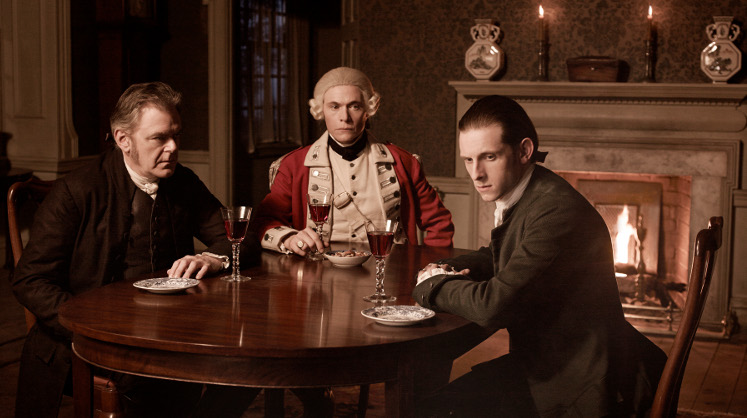
Nathan Hale’s Failure
The first season depicts how the ring took root in Setauket, “an insular and isolated place,” as Rose describes it in his book, where the “complex web” of relationships was “key” to their success. The idea was originally planted in the head of Major Benjamin Tallmadge, a Setauket native whose “dearest friend,” as he put it, was his Yale College roommate Nathan Hale, who had first volunteered to help Gen. Washington obtain intelligence behind enemy lines. Hale landed in Huntington Harbor—today’s Halesite—but soon fell into the hands of the wily Robert Rogers, a royalist who trawled Long Island’s shorelines in a sloop given him by Admiral Howe. Hale was hung in New York City, but not before allegedly uttering his famous last words, “I only regret that I have but one life to lose for my country.” (Rose contends that those sentiments were given to Hale posthumously by his friend William Hull, who lifted them from a play called Cato that both men had enjoyed seeing at Yale.)
Another factor influencing Tallmadge to fight back was that the British had captured his oldest brother during the Battle of Brooklyn and left him to starve to death with other American soldiers on one of the ghastly British prison ships anchored in New York Harbor.
Tallmadge knew that Brewster, an experienced sailor born in Setauket, was willing to be a courier. So when he learned that another childhood friend, Abraham Woodhull, a cabbage farmer, had been caught red-handed by an American sloop patrolling the Sound to contain “The London Trade,” as Rose explains it, “in which hogs, chickens, and beef were smuggled from Connecticut into New York, and gold buttons, cut-glass decanters, and casks of Madeira returned in the opposite direction,” he intervened on Woodhull’s behalf and got him released from custody. Tallmadge told Gen. Washington that Woodhull could be a contact for Brewster, vouching in a letter written in August 1778 that “you should be perfectly convinced of the integrity of W___.”
Tallmadge didn’t have an agent in New York City so Woodhull had to fulfill the role, a task he dreaded.
“It was by far the riskiest aspect of his job,” writes Rose, “for not only did villains, Tory plunderers, and British patrols infest the 55-mile road to New York, but worse, he had to leave his aged parents for several days… stay in expensive inns, travel by himself in the muck and the cold.”
Later that role was performed by the horseman and tavern owner, Austin Roe, who will not appear in the series’ consolidated storyline, according to Silverstein.
On Oct. 3, 1778, Woodhull went through a British checkpoint and “received their threats for coming there that make me almost tremble knowing…my business.” The chilling experience only increased his paranoia. Woodhull wanted Tallmadge to destroy all their correspondence, which his handler promised to do, but he was never told that Washington’s staff had kept them for “administrative reasons,” said Rose—and those are the letters that have survived today in public collections like those at the Library of Congress and at Stony Brook University’s Frank Melville Jr. Memorial Library, which has two of the Culper Ring’s correspondences.
Washington, Tallmadge and Tallmadge’s unimaginative superior, Gen. Charles Scott, came up with the aliases for the spy ring. Tallmadge became “John Bolton,” an innocuous name, and Woodhull became “Samuel Culper,” a play on Culpepper County in Virginia, where Washington had once worked as a surveyor. Tallmadge’s younger brother was named Samuel. Brewster didn’t want an alias, “being a bluff and reckless fellow willing to take his chances,” according to Rose.
The invisible ink they ended up using was the invention of James Jay, the brother of New York Gov. John Jay. Its ingredients are still a mystery, historians say. Here are a few of the code numbers the ring used: 151 meant “disorder,” 178 was “enemy,” 660 was “vigilant,” 728 was “Long Island,” 729 was “Setauket” and 745 was “England.”
Writing in 1939, Long Island historian Morton Pennypacker said that the formation of “The Secret Service Bureau,” as it was originally called, “was so helpful to General Washington all through the Revolutionary War.” Tallmadge’s homegrown spy network would come to be regarded as the most effective of any intelligence-gathering operation on either side during the Revolutionary War.
Tallmadge needed someone who could more comfortably mingle with the British officers and the Tories in the city than Woodhull. And that’s where “Culper Jr.” came in—his real identity remained a secret until 1930. Not even Gen. Washington knew that his most valuable spy was really the merchant Robert Townsend, whose father’s place is Raynham Hall, the historic landmark that still stands in Oyster Bay. According to Pennypacker, Gen. Washington had kept Culper Jr.’s letters, and in 1930 they were compared to “a chest of old documents” that belonged to Townsend. Albert S. Osborn, then one of the world’s foremost handwriting experts, confirmed that Culper Jr. was actually Robert Townsend. As Pennypacker wrote, “The paper upon which they were written was identical, the same watermark, the same shade, the same weight.”
With “Culper Jr.” Washington was most pleased. “He is a Gentleman of business, of Education, and honor,” the general wrote. “He is a person that hath the interest of our country at heart… His accounts are intelligent, clean and satisfactory.”
Townsend, who had joined the spy ring in June 1779, was also the silent business partner of James Rivington, “one of the city’s more notorious characters,” Rose said. With his Rivington Royal Gazette, founded in 1777, he became “New York’s godfather of journalistic hackdom.” As Robert Biddulph, a British observer, described him at the time, Rivington “may very properly be called The Priest of the Temple of Falsehood.” Rivington ran pro-British stories, telling his Tory readers that the Whig legislatures were “those devouring locusts,” that Congress was about to rescind the Declaration, and that the Tsar was sending 36,000 Cossacks to “stamp out the rebels…” Next to his printing business, he opened up his Coffee Room, where British officers gathered happily, not suspecting that Rivington was supplying information to Culper Jr.—whom Rivington never knew was his partner Townsend.
Viewers of TURN won’t be taken inside the Coffee Room until later seasons, Silverstein said.
“What we show in the first season is the necessity for a Townsend by showing how treacherous it was for Abe Woodhull to make the trek from Setauket to New York, and all the hazards that were involved in that journey back and forth.”
Townsend’s role in the ring is fleshed out by Brian Kilmeade and Doug Yaeger, authors of George Washington’s Secret Six, which has been a New York Times bestseller, and that greatly pleases Raynham Hall’s executive director, Harriet Gerard Clark.
“During the years of the Revolutionary War, Townsend was working in Manhattan on behalf of his family’s interests and he was posing as a Loyalist so he was able to hang out in coffee houses in Manhattan and listen in on conversations about troop movements,” Clark tells the Press. “At the beginning of the war, we were severely outnumbered and out-financed, and the British had 300 warships in the harbor, and we don’t have any. The Battle of Brooklyn really brought home to Gen. Washington that he wasn’t going to be able to win entirely by conventional methods.”

The Oyster Bay Connection
Robert Townsend’s father, Samuel, was a known Patriot and was arrested by the British. On his way to a prison ship, a neighbor intervened and paid the elder Townsend’s bail, saving his life. But then the British commander, Lt. Col. John Graves Simcoe, forced him to sign an oath of loyalty to King George III. He didn’t have much choice after the British occupied his homestead—the “finest in Oyster Bay”—and stayed there for about six months. Visitors to Raynham Hall’s cramped confines today can only imagine how it must have felt for the patriarch of the Townsend family, whose sympathies to the Patriot cause had almost cost him his property and his life. Then he could only watch as Simcoe, who was engaged to a woman in England, tried to woo his daughter Sarah Townsend, who was called Sally, sending her love poems that historians regard as the first Valentines sent in the country.
“By the standards of the time I think they got along reasonably well, considering they were living cheek by jowl, but it couldn’t have been easy,” says Clark of Raynham Hall. “But I think at some point something must have [tweaked] Robert. We don’t have any indication of a change of heart. But one can imagine that at some point he just got fed up with having these people living in his father’s house.”
After the war was over, Robert and Sally lived at Raynham Hall until their 80s, and both died without ever having married.
In his book, Rose wrote that Townsend had mixed motives for becoming a spy.
“He was an extremely complex man,” Rose says. “His reasons were partly religious, partly patriotic, partly self-interested, and partly because he was annoyed about the practical aspects of British military occupation. In Washington’s Spies, I accordingly call him ‘a man of parts and halves.’ He’s never entirely or simply one thing or another; all the elements in his make-up were dominant at various times—sometimes at the same time, which is what makes him such an interesting historical character.”
It was at Raynham Hall where the British officer Major John Andre would visit his good friend, Lt. Col. Simcoe. In fact, daily officers’ meetings took place in the parlor. And it was there, some historians claim, that the Culper Ring got word that Andre had turned Benedict Arnold into a traitor plotting to let West Point fall into British hands. Arnold’s price of betrayal, according to Rose, was “the equivalent of half a million dollars and the promise of a knighthood.” After the plot was discovered, Andre was hung but Arnold sought refuge in England, where “the Whigs loathed him and the Tories distrusted him,” Rose writes. Arnold had known about the Culper Ring but never found out who they were although he did learn that Tallmadge had at least one agent under his command.
In 1779, when the Ring was running smoothly, they could get information to Gen. Washington in a week. Here’s how it supposedly worked:
Roe would return from Rivington’s Coffee Room in lower Manhattan with “half a ream” of paper enclosing a letter written with invisible ink by Robert Townsend under his alias Culper Jr. Once in Setauket, Roe would put the material in a drop box on Woodhull’s field where only cattle kept watch. Later Culper Sr. would transfer the contents to a bag for Brewster to take across the Sound on one of his whaleboats once he’d gotten a signal from Anna Smith Strong, the wife of Judge Selah Strong. On a clothesline strung across her family’s creek at Strong Neck, she’d hang a black petticoat and a certain number of white handkerchiefs corresponding to a particular cove where Brewster could pick up his package without risk of capture—at least on the Long Island side. Once he was safely across the Sound, he would connect with Gen. Washington’s dragoons—three men were posted every 15 miles apart—who would make haste to get the message into Tallmadge’s hands so he could decipher the intelligence report.
Dramatic History
In the series, Townsend doesn’t show up in the first season, nor will the invisible ink. But they’re coming, Silverstein promised—assuming TURN can win enough viewership to persuade AMC to renew it. It’s a daunting task, because his series faces a formidable adversary itself: HBO’s blockbuster Game of Thrones starts airing its new season at 9 p.m. on April 6. Asked about the scheduling conflict, Silverstein laughed, insisting that the Culper Ring “sure is” an American story, whereas that’s not the case for tales taking place in Westeros, the imaginary land of the Seven Kingdoms.
“Westeros ain’t America!” he says. Like Gen. Washington, Silverstein believes in his cause. Indeed, he’s already got the set built for Rivington’s Coffee Room.
“The Culper Ring gets better and better over the series,” Silverstein says. “They don’t start as a ‘Mission Impossible’ team. They kind of screw up at times.”
Knowing the complicated history, Silverstein had to make some tough choices creatively.
“I had to find an arc for these characters,” Silverstein says. “I had to find conflict, which is the lifeblood of any drama. Thankfully, there is conflict between the Culper Ring members. Actually in history they quit and break apart several times, and then reform it in the 11th hour and save the day. That happens a lot because their lives are at risk, and they’re under incredible pressure. In creating a group that was sort of a grassroots spy ring, it really becomes a model of collective action; it’s true democracy the way they pull that together.”
Silverstein has only admiration for the sacrifices the members of the Culper Ring made to survive.
“The idea that you would stay behind enemy lines, that you would live a normal life as your cover or invent a false legend for yourself, and that you would swear allegiance to the King but actually be lying about that, was a pretty radical concept and a lot of the generals on the American side didn’t like it,” Silverstein says.
Back then, spies were not viewed with the same regard we hold today for, say, James Bond. Military scouts had more respect because they rarely shed their uniforms rather than don a disguise to blend in behind enemy lines.
“The only reason they were able to get away with that is because Washington had their back,” he says. “They were very valuable to him and he allowed Ben Tallmadge to run them with absolute autonomy.”
Rose described the two Culpers thusly: “Robert Townsend—the tortured, flawed Oskar Schindler to Woodhull’s selfless Raoul Wallenburg.” After the war, Woodhull was the First Judge of Suffolk County between 1799 and 1810, and was mum about his wartime espionage.
Tallmadge, who had married the oldest daughter of William Floyd, one of the signers of the Declaration of Independence, was also quite circumspect, writing in his memoirs 50 years after the Revolution that in 1778 he had “opened a private correspondence with some persons in New York [for General Washington] which lasted through the war… I kept one or more boats continually employed in crossing the Sound on this business.”
According to Rose, Tallmadge, who had been elected to Congress in 1801 on the Federalist Party ticket, made no other mention of his spy activities.
Caleb Brewster, the brash boater, settled in Fairfield, set up first as a blacksmith and then joined what would become the Coast Guard, whose duties ironically included patrolling the Sound and stopping smuggling.
On Gen. Washington’s 1790 tour of Long Island—his victory lap, let’s say—he spent a night at Austin Roe’s tavern on the road between Port Jefferson and Setauket, which he described in his journal as “tolerably decent with obliging people in it.”
As Rose put it, all the members of the Culper Ring “were adamant about one thing: They did not serve for pay, and would not accept any reimbursement apart from money rightfully owed to them for expenses.”
Of course they could only be paid in British currency—not Continental Congress-printed paper—so as not to draw suspicion. But they did not pad their expenses on principal.
According to George Washington Custis, the general’s adopted son, the cost of the Culper Ring ran between 1,000 and 1,500 pounds—“a dog cheap bargain…the gold paid for the Secret Service was of inestimable value when it is remembered how much it contributed to the safety and success of the army of Independence.”
The Culper Ring did not try to cash in on their celebrity. There were no tell-all memoirs, no “as-told-to” tales of their derring-do. As Rose put it, they had “the decency, modesty, and honor not to keep demanding pensions, medals and recognition for their services.” They served their young country at its darkest hour to ensure that American liberty would shine in the years ahead. For them, that was their own reward.
For more information on the Culper Ring, Long Island offers several venues:
The Three Village Historical Society sponsors tours in the Setauket area, and has a special exhibit about their “hometown heroes” open Sundays 1- 4 p.m., at their museum, 93 N. Country Rd., www.tvhs.org; 631-751-3730.
Stony Brook University’s Frank Melville Jr. Memorial Library, 100 Nicolls Rd., Stony Brook, 631-632-7100, www.library.stonybrook.edu; call for hours.
Raynham Hall Museum is open daily, except Mondays, 20 W. Main St., Oyster Bay, 516-922-6808, raynhamhallmuseum.org.
The Long Island North Shore Heritage Alliance, which has set up Culper Ring tour sites, 631-498-4740, longislandheritagetrail.com.




